
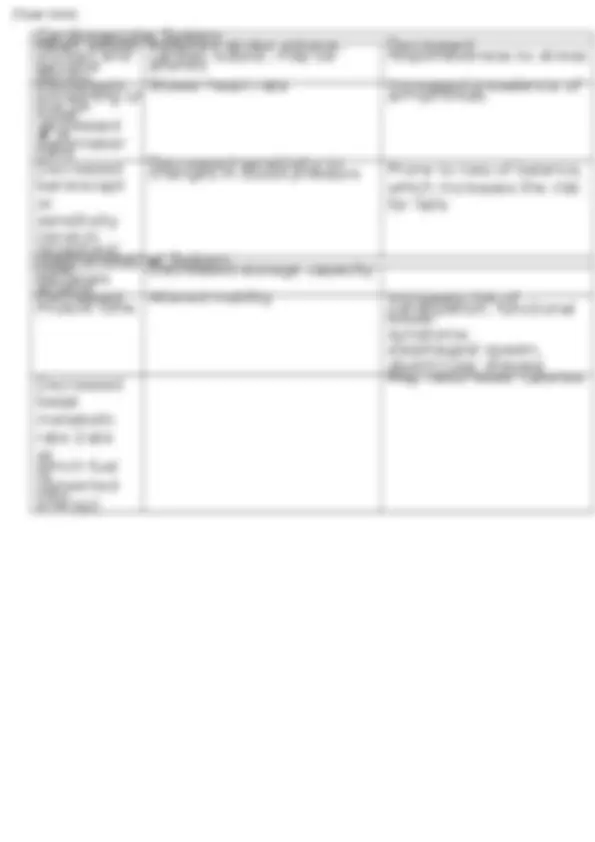
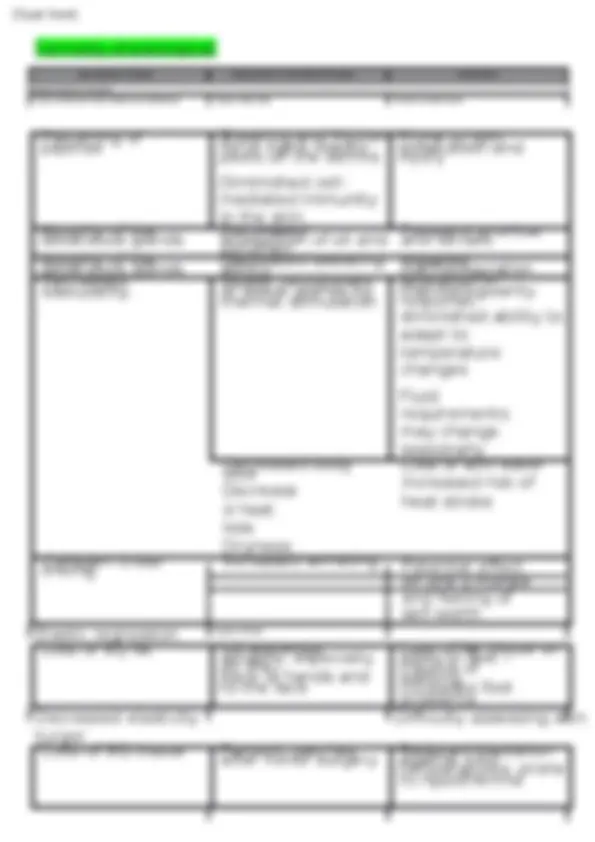
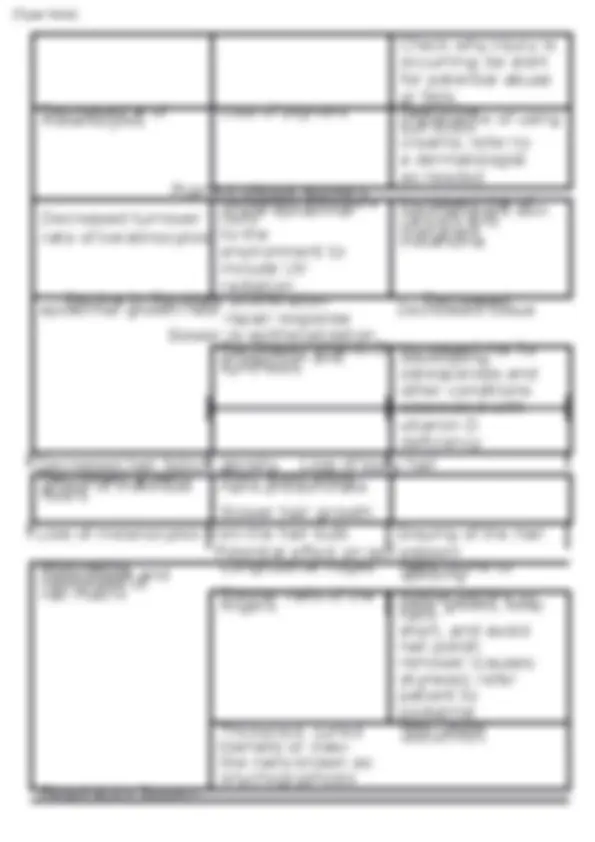
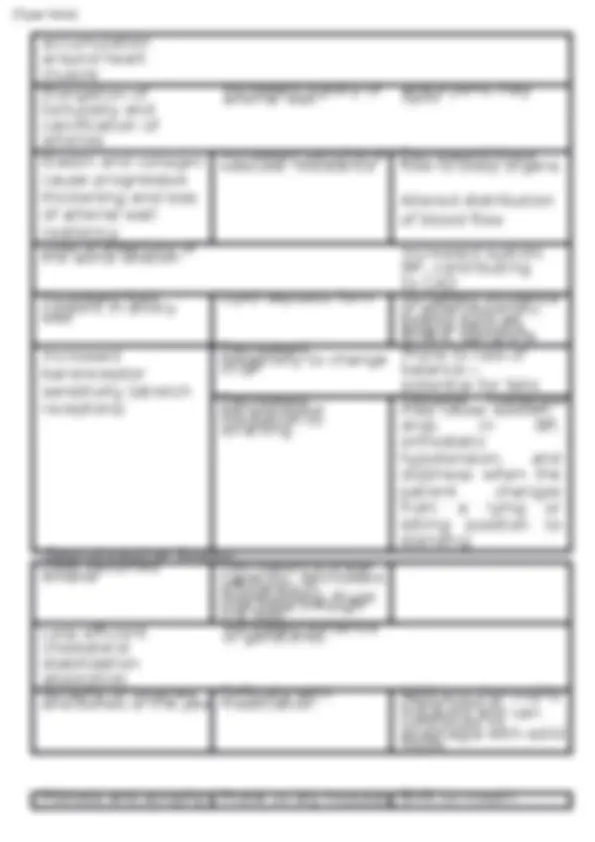

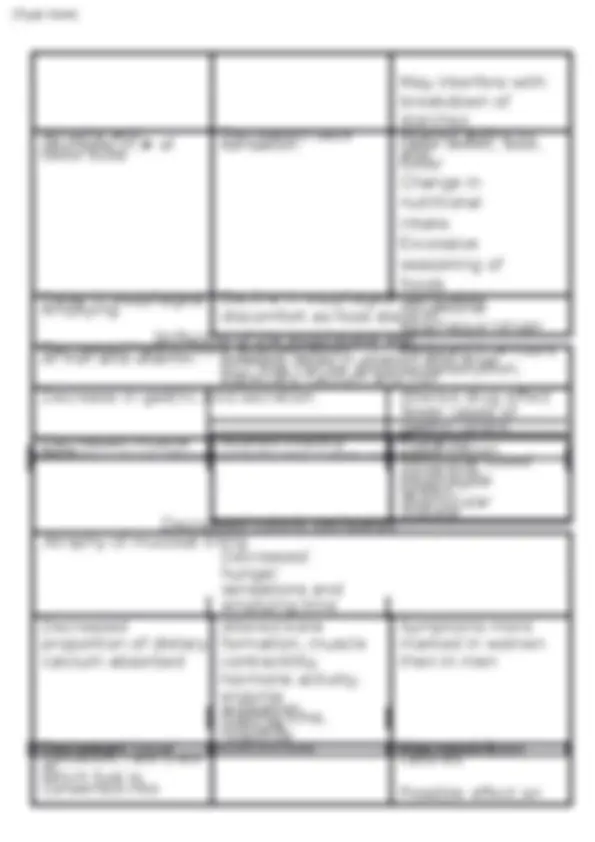
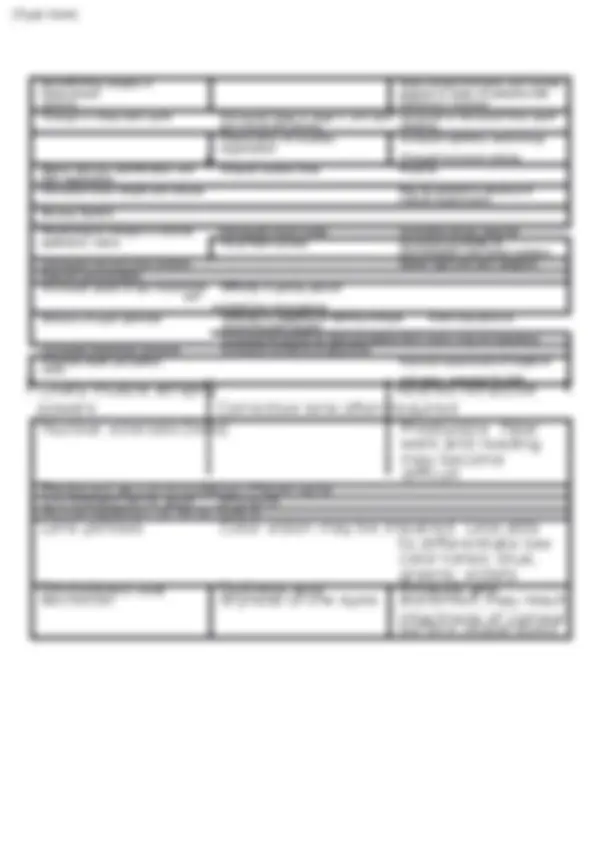
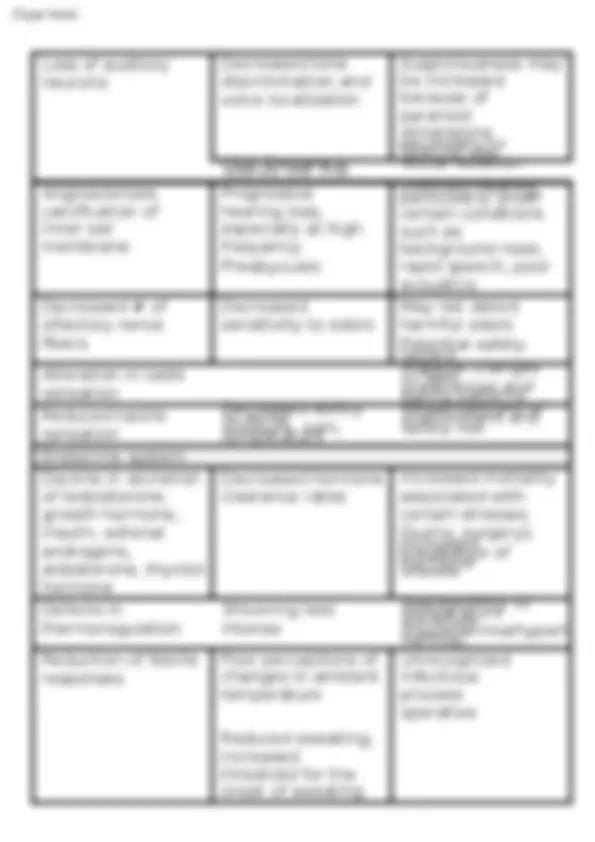
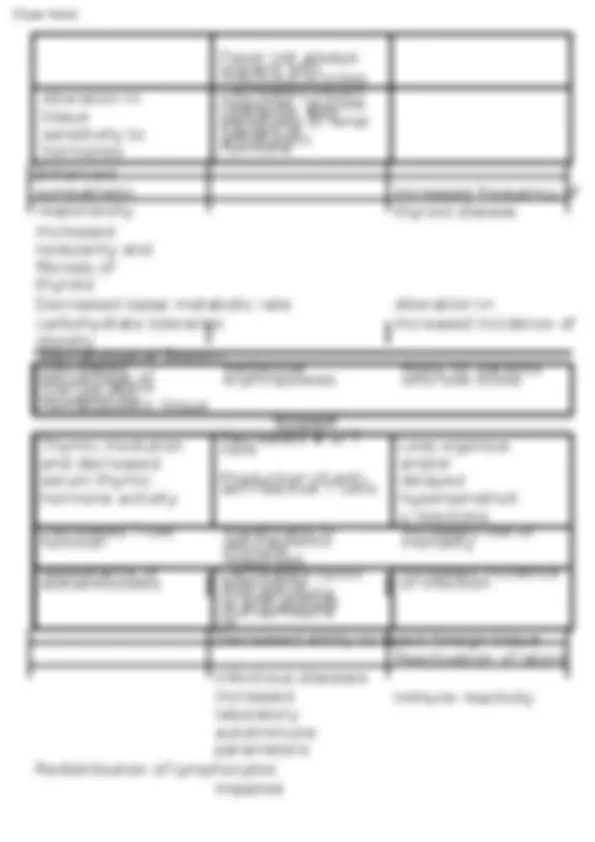
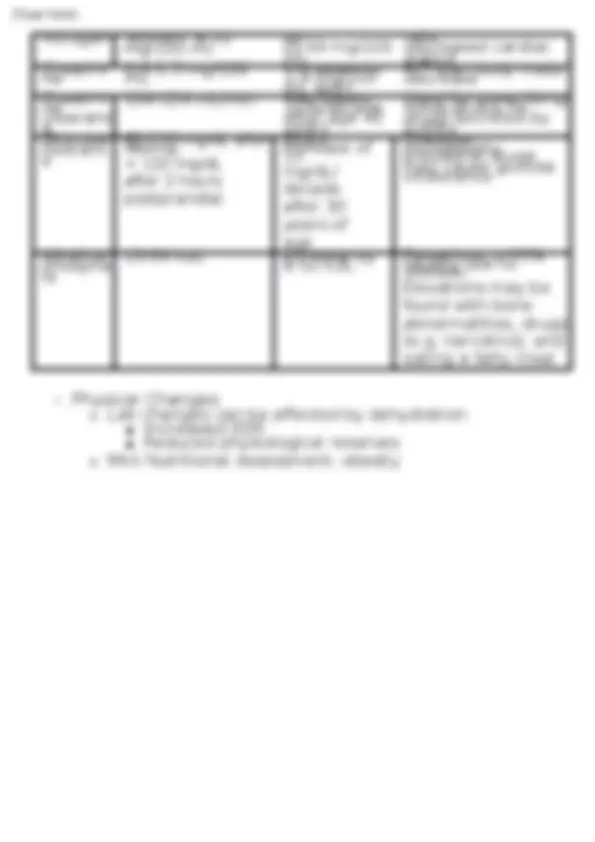
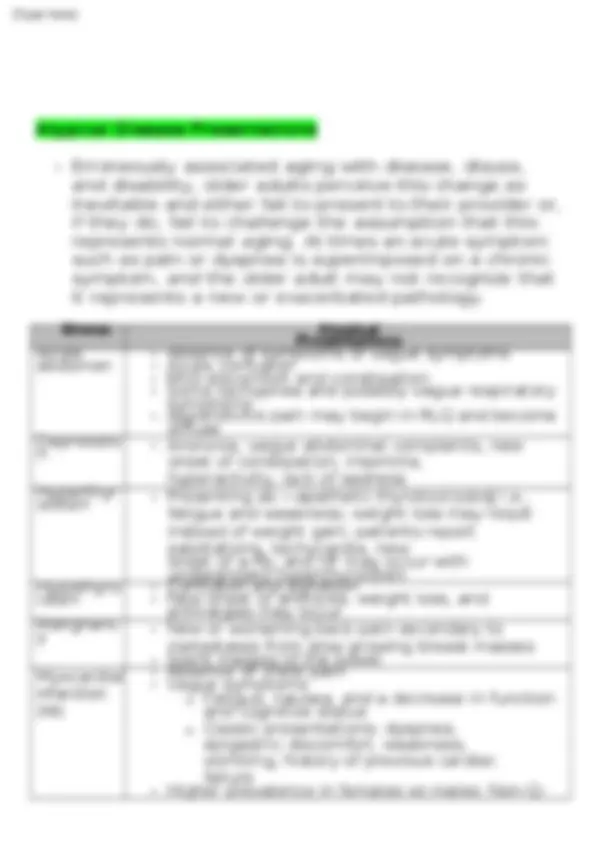
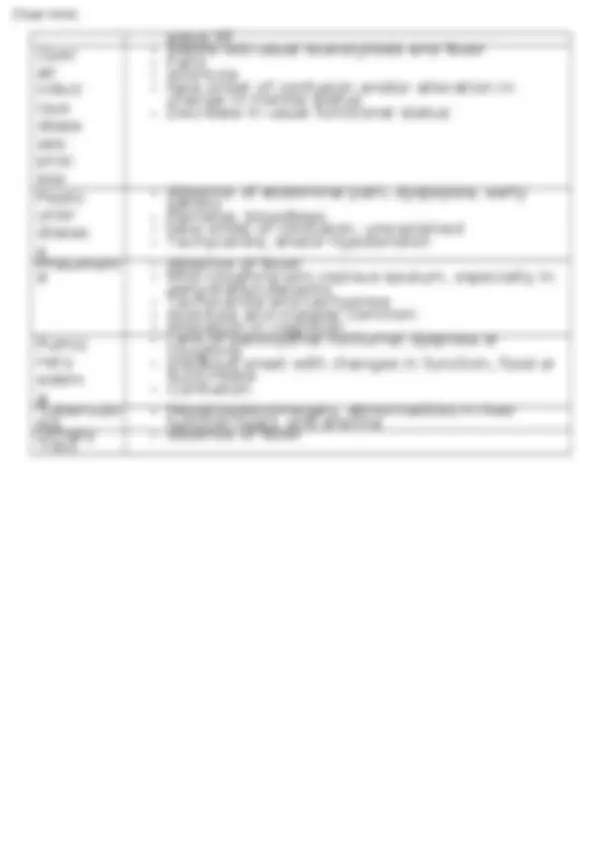
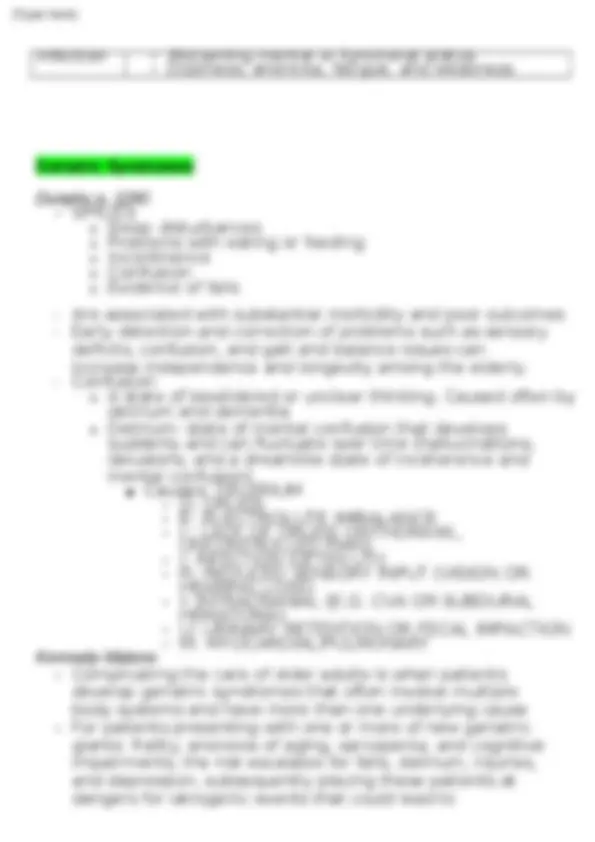

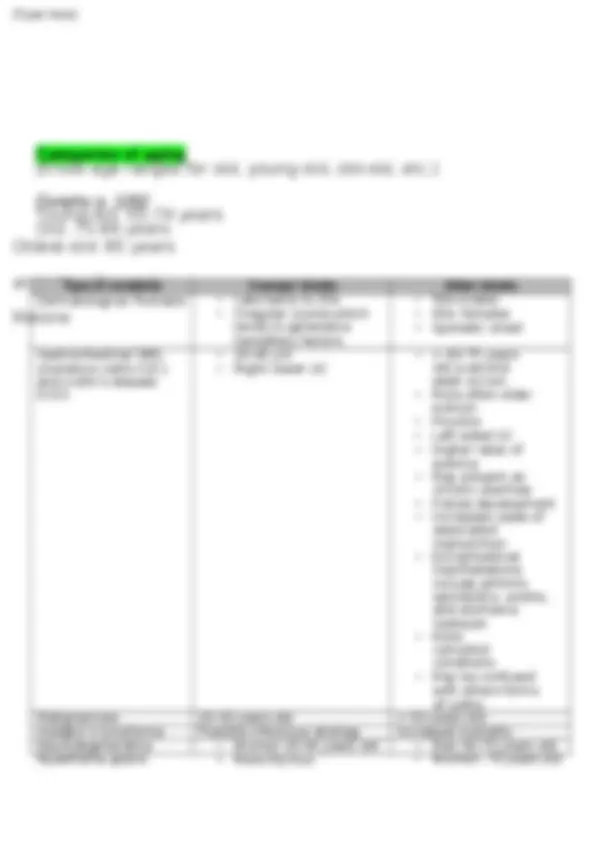
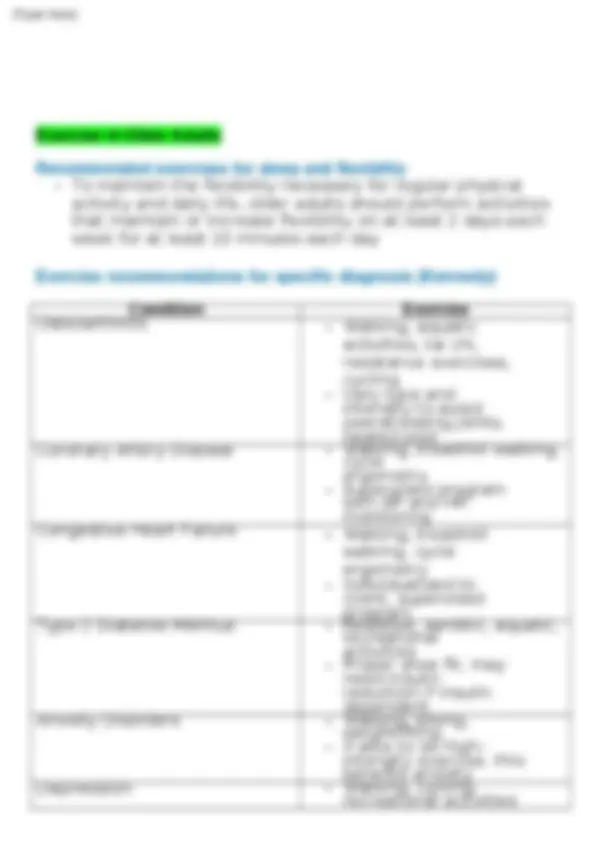
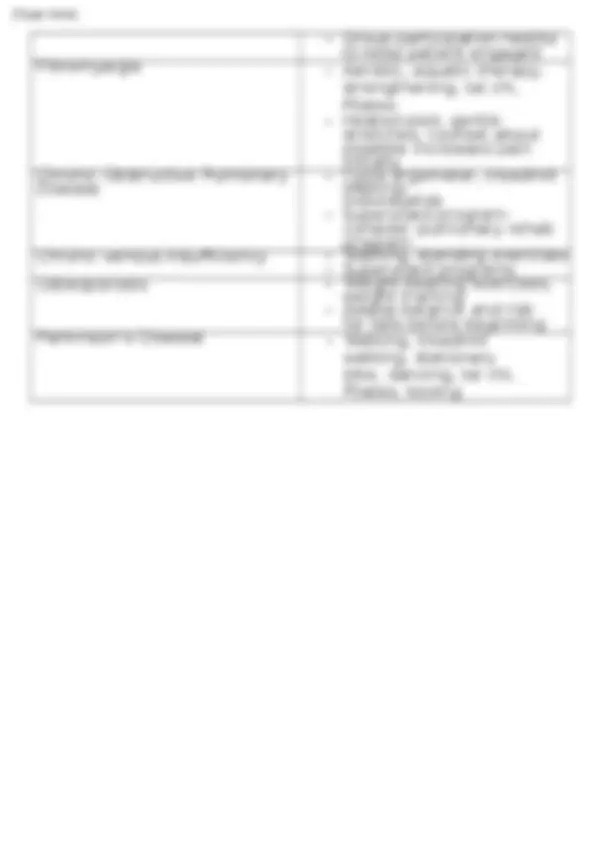
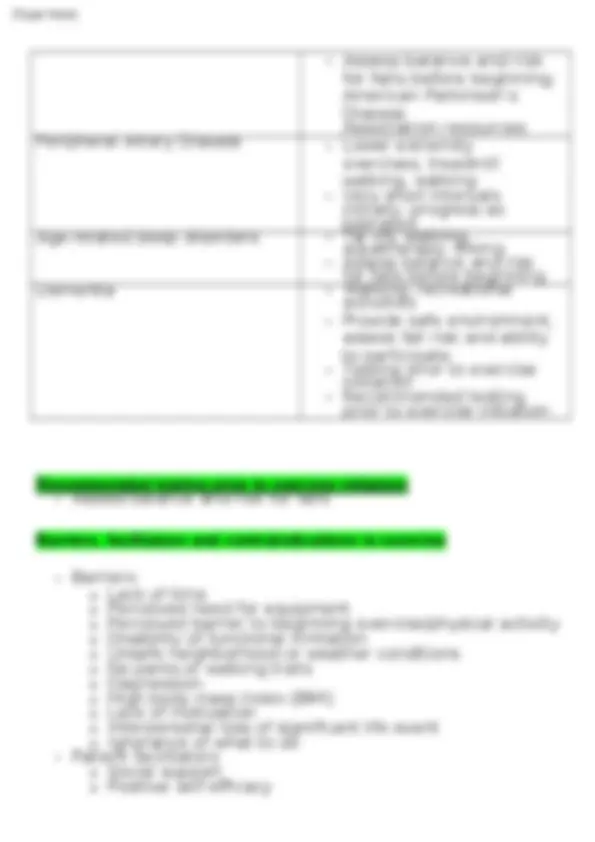

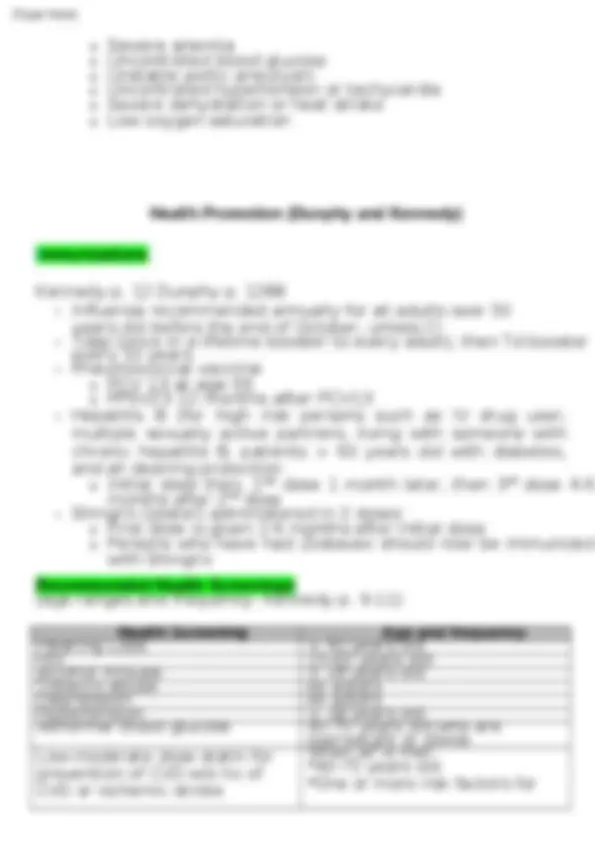

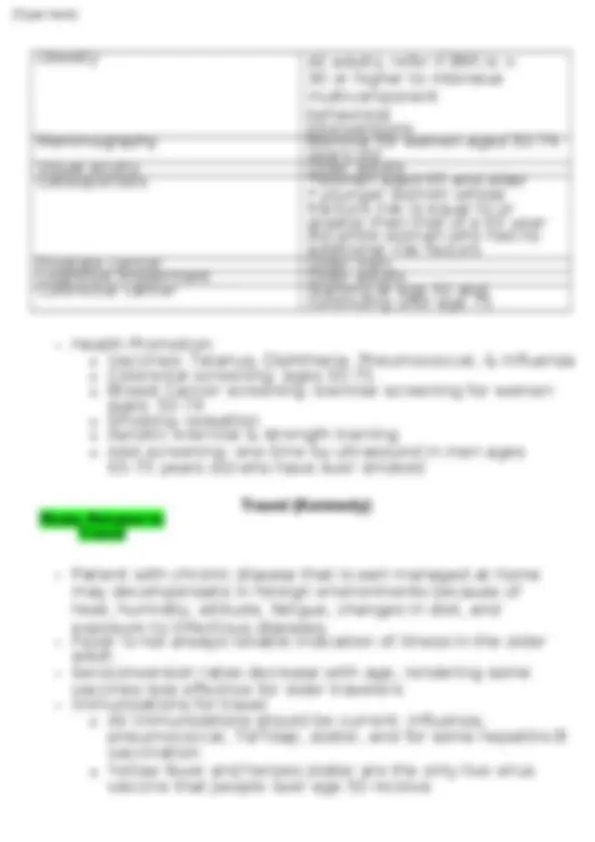

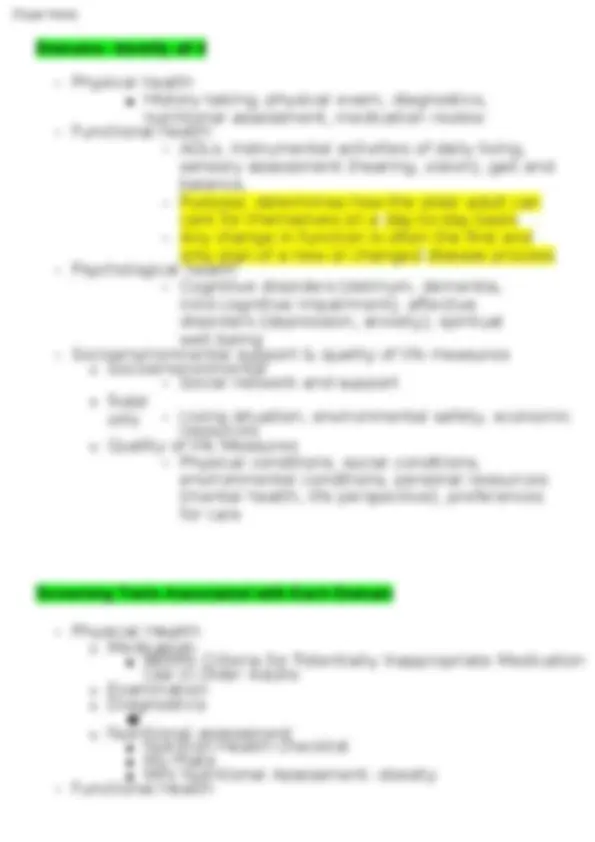



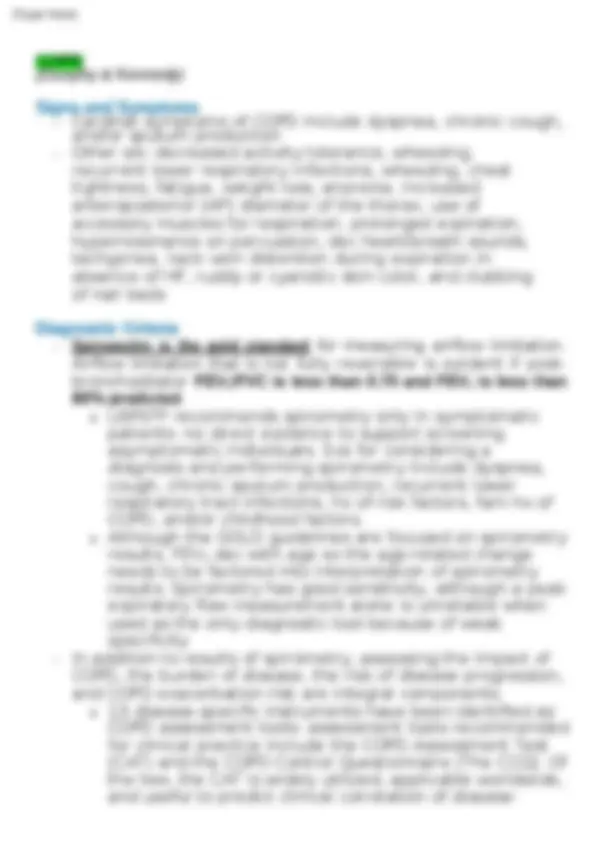
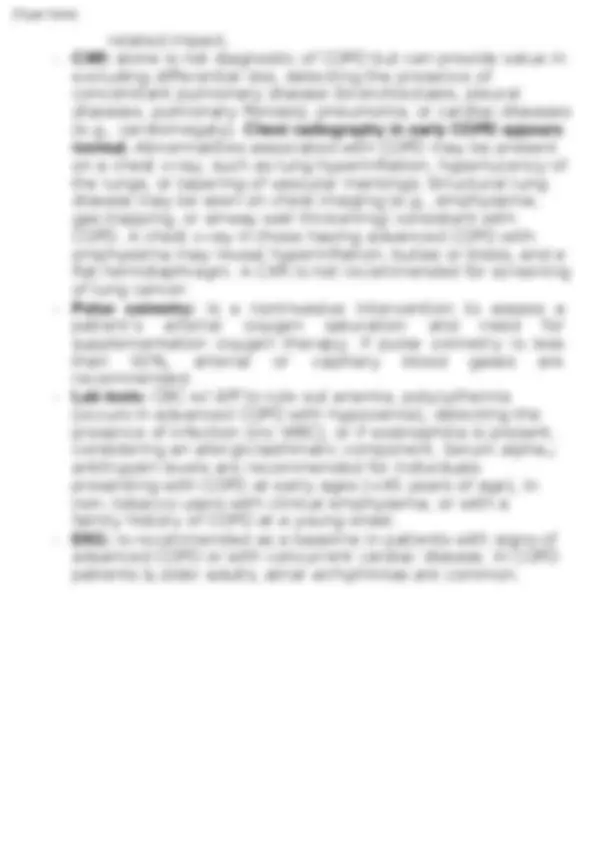
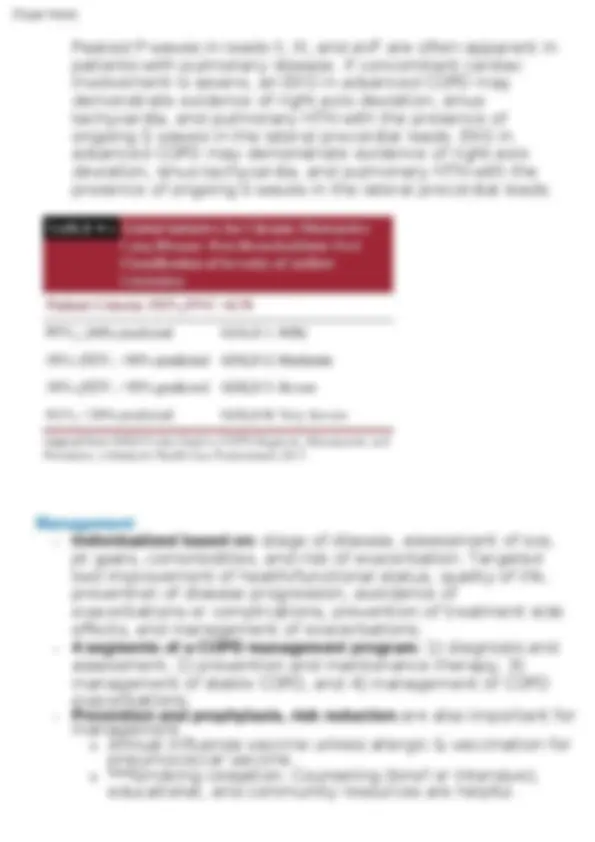
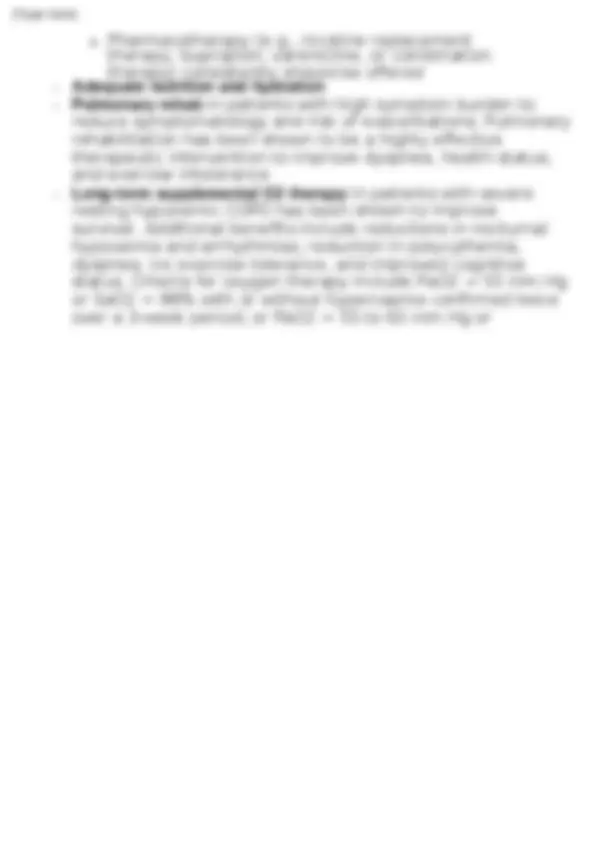
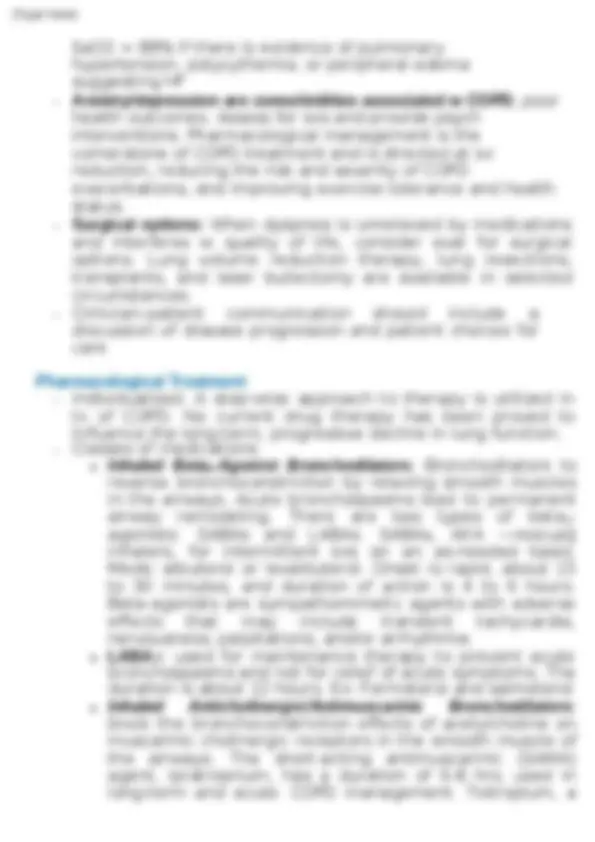
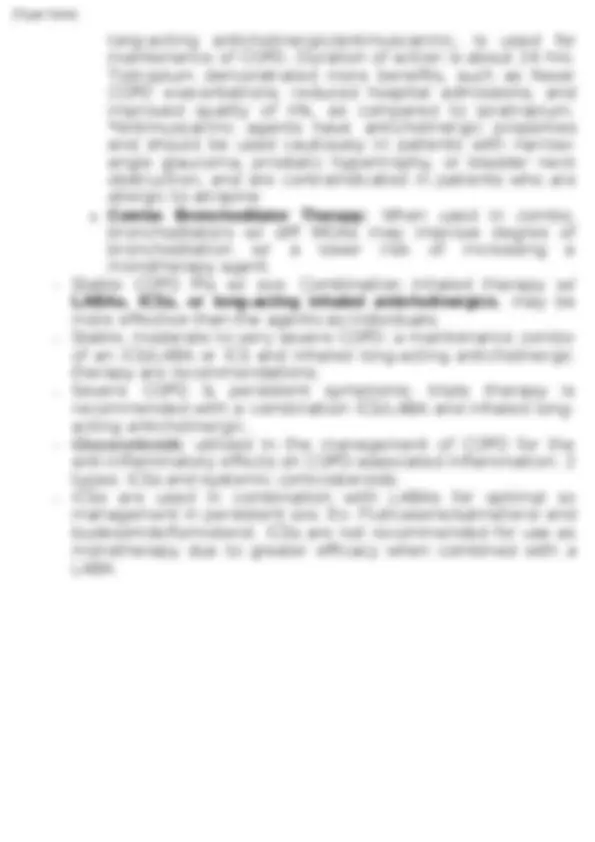



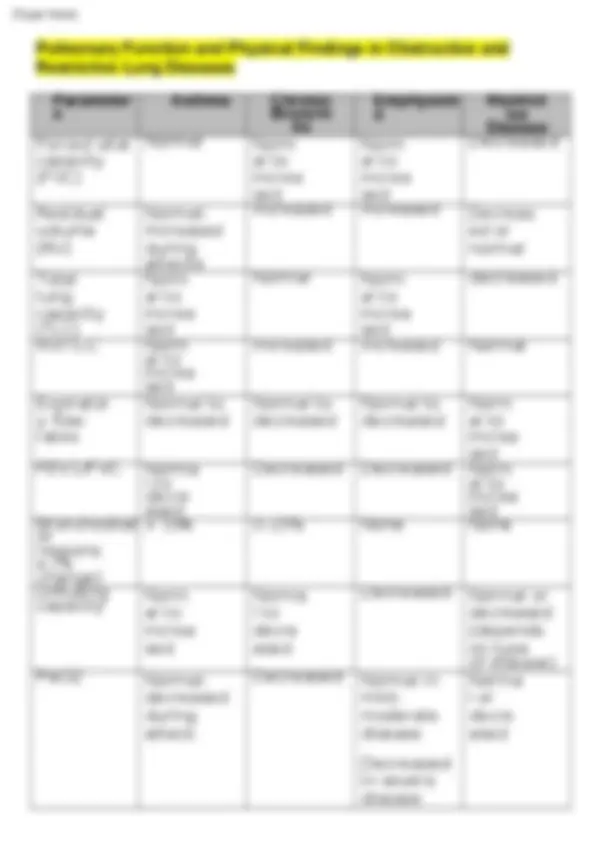
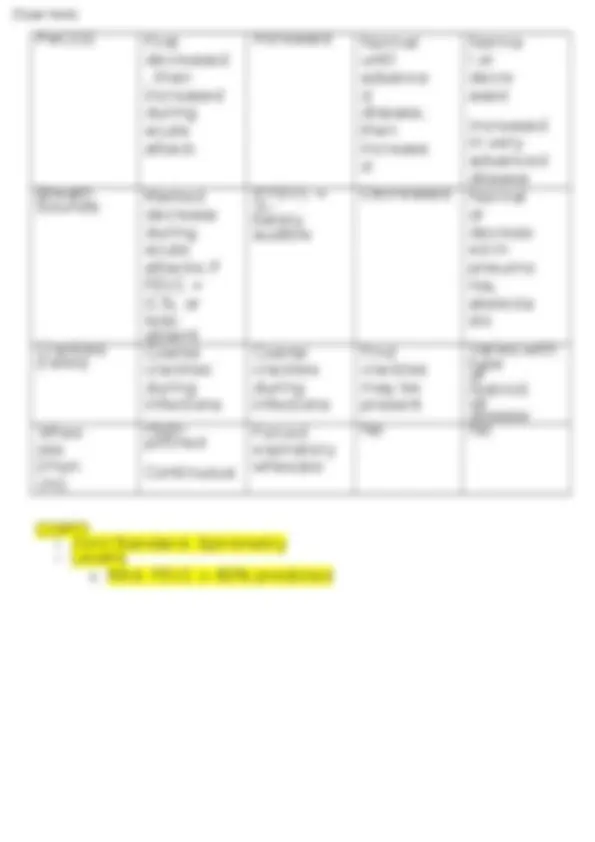






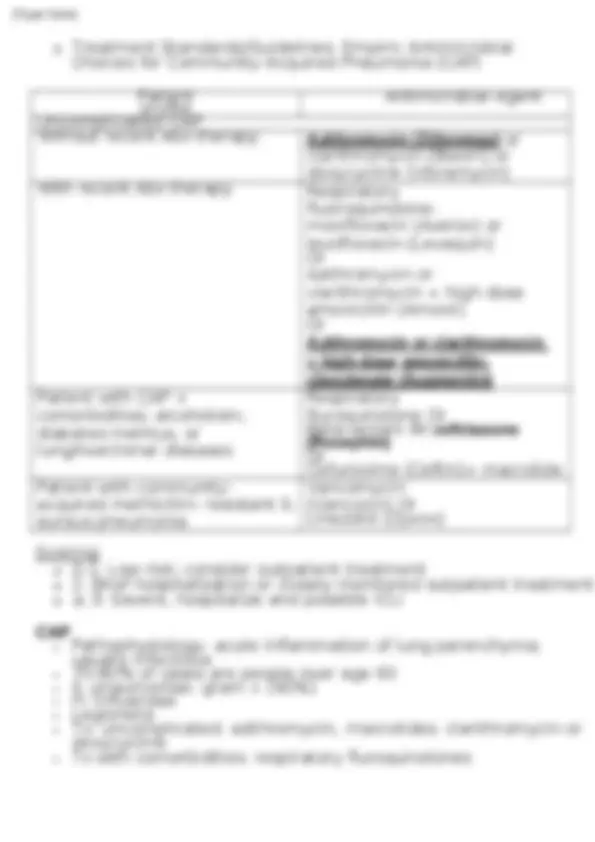



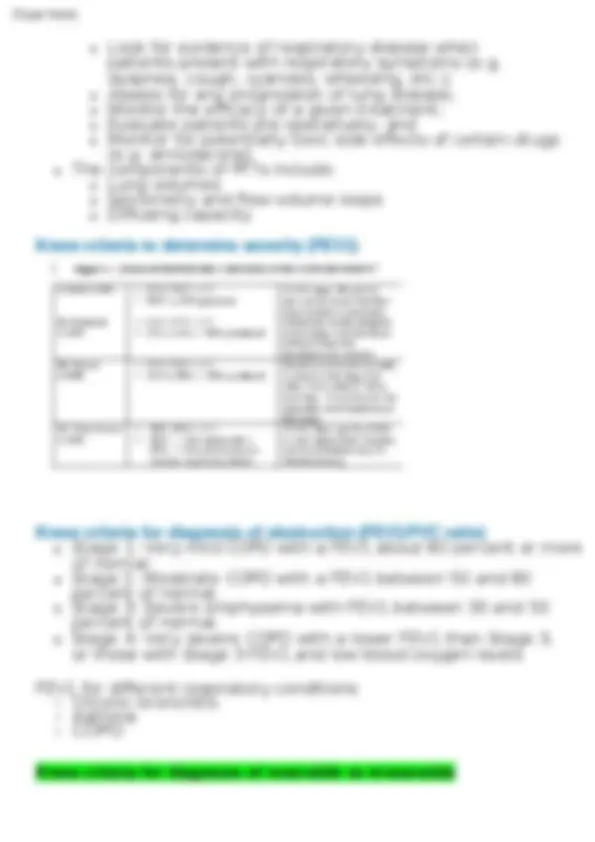





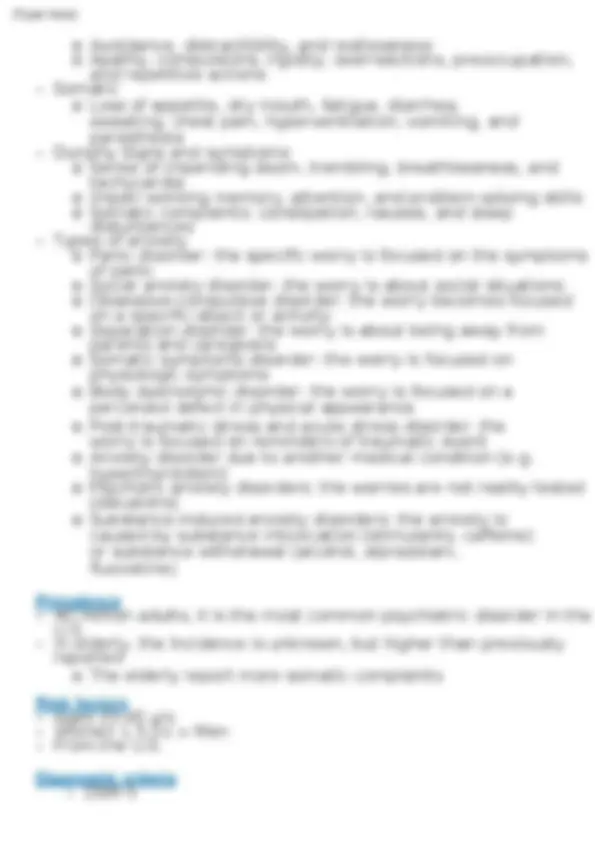

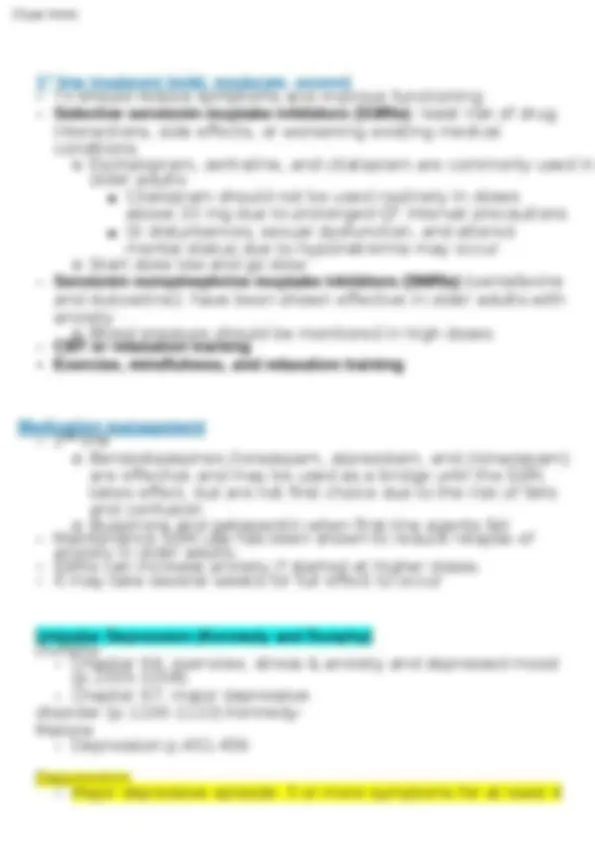

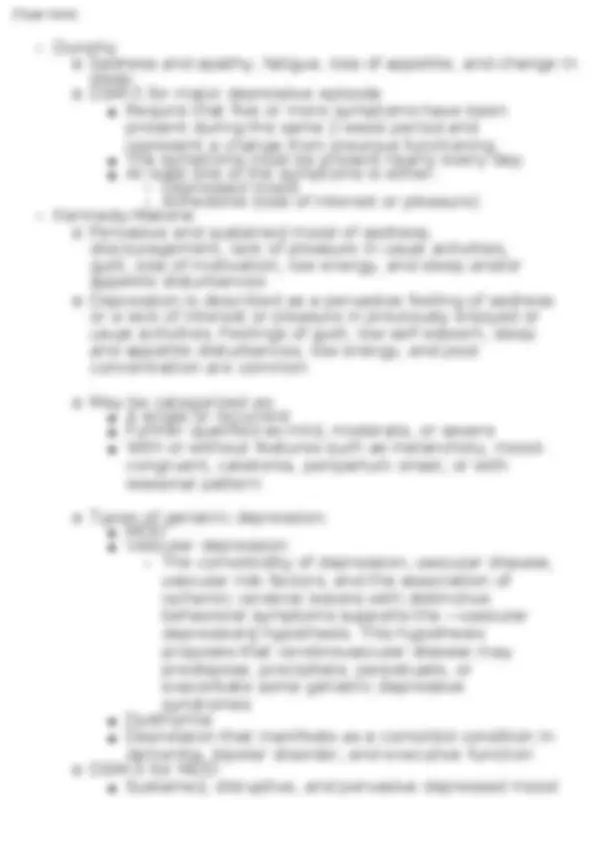



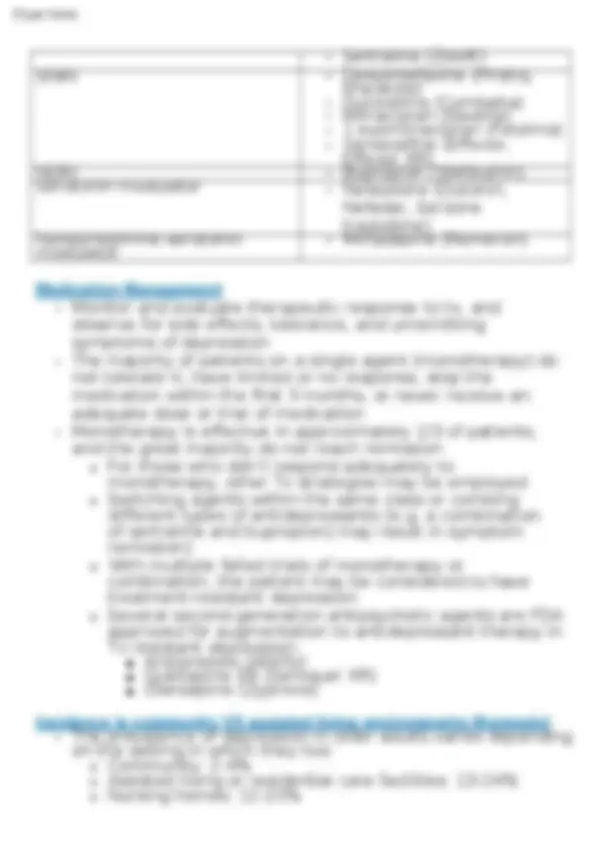

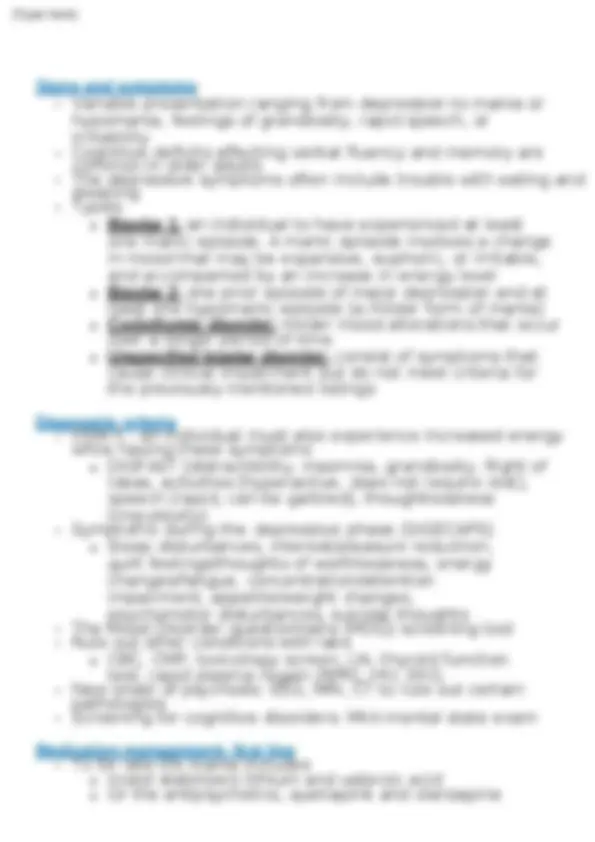
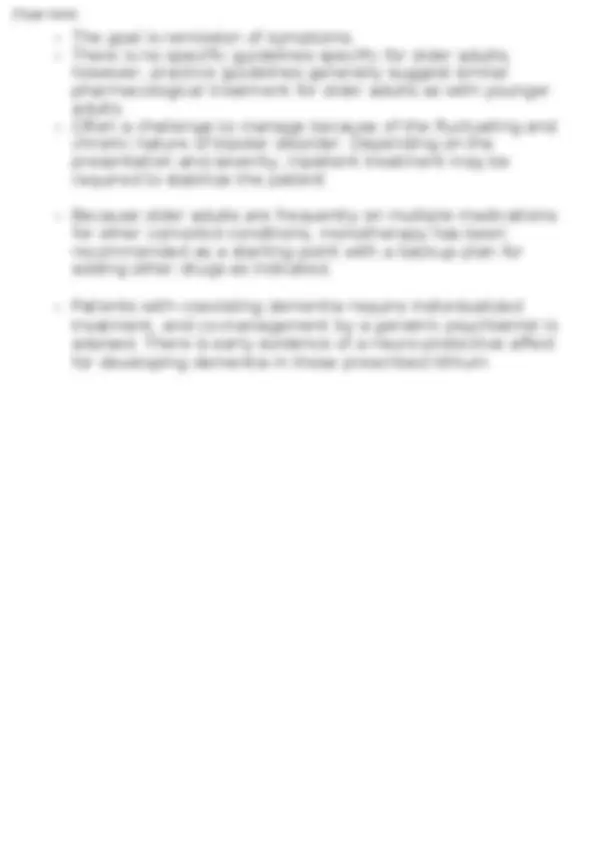
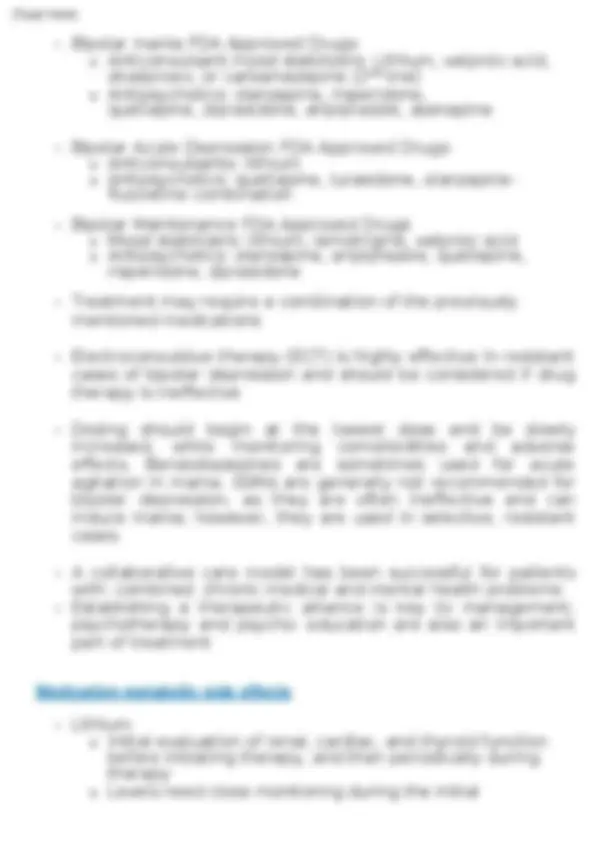



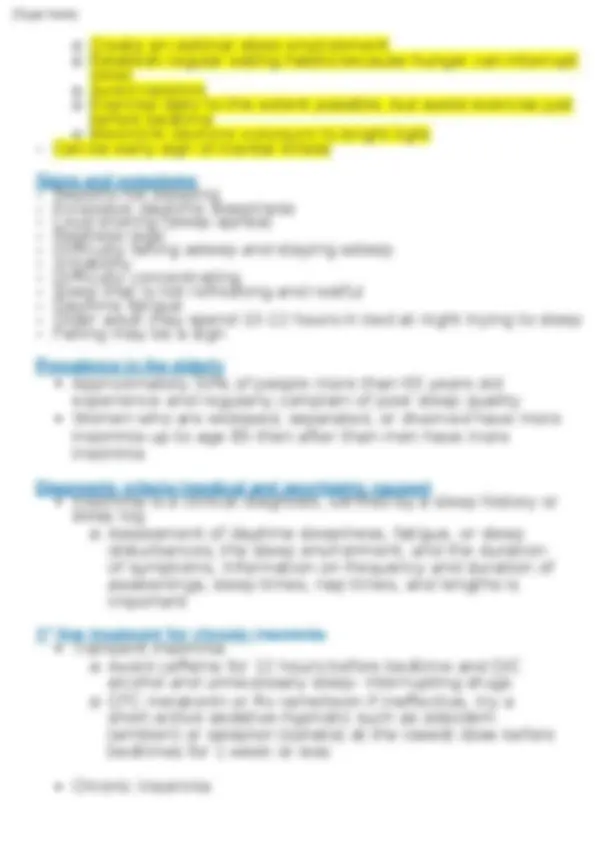







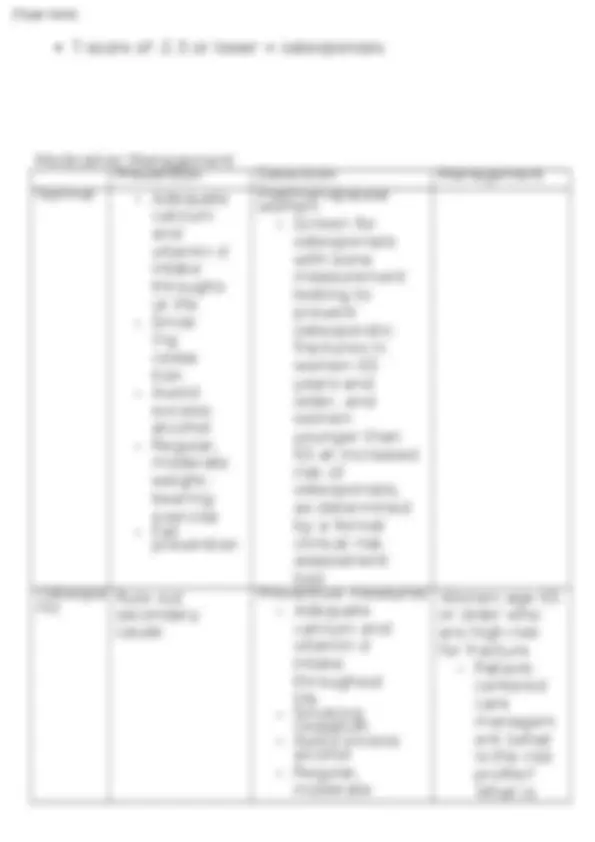
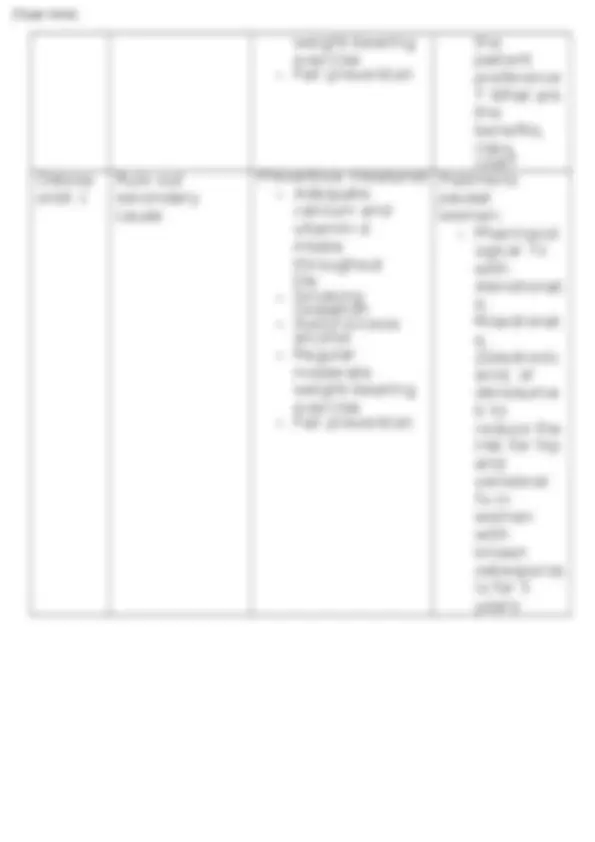
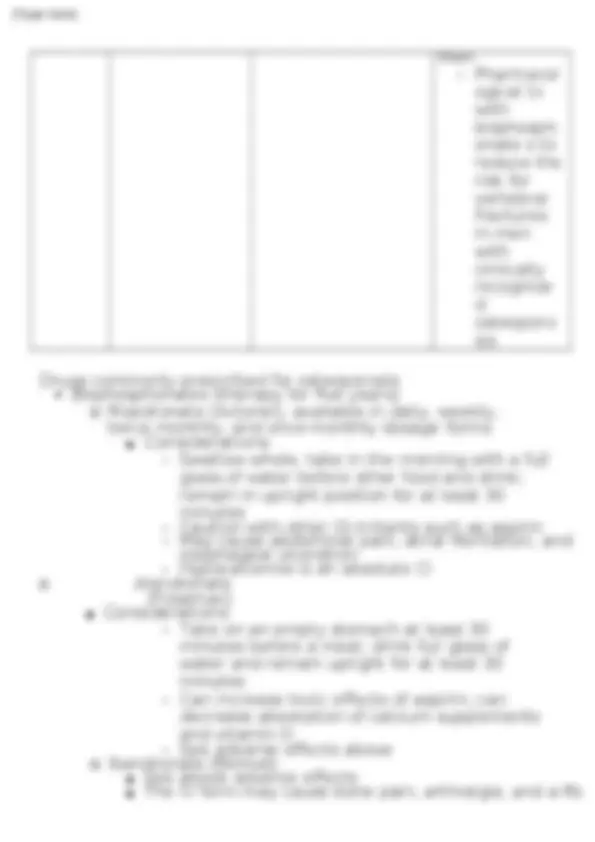







Study with the several resources on Docsity

Earn points by helping other students or get them with a premium plan


Prepare for your exams
Study with the several resources on Docsity

Earn points to download
Earn points by helping other students or get them with a premium plan
Community
Ask the community for help and clear up your study doubts
Discover the best universities in your country according to Docsity users
Free resources
Download our free guides on studying techniques, anxiety management strategies, and thesis advice from Docsity tutors
A study guide for the NR 601 Midterm Exam. It discusses the developmental changes that occur in the integumentary, respiratory, cardiovascular, genitourinary and reproductive, neuromuscular, and hematological systems as a person ages. The guide also explains the implications of these changes and their effects on the body. a comprehensive overview of the topic and is useful for students studying nursing or medicine.
Typology: Exams
1 / 94

This page cannot be seen from the preview
Don't miss anything!























































































NR 601 Midterm Exam Study Guide
Developmental Changes
replicate or divide a specific number of times.
o This ability decreases with age
aerobic metabolism, which generates chemicals called
free radicals
o Free radicals may interact with other chemicals in the body
and cause damage to cells
division
more vulnerable to infection and debilitating diseases
Dunphy physiological p.
Age- Relate d Chang
e
Appearance or
Functional Change
Implic
ation
Integumentary System Loss of dermal and epidermal thickness
Loss of SQ tissue and thin epidermis
Prone to skin breakdown and injury
Decreased vascularity •^ Atrophy^ of^ sweat
glands resulting in
decreased sweat
production
requirements
may change
seasonally
Decreased vital capacity Reduced overall efficiency of ventilatory exchange Cilia atrophy Change in mucociliary transport
Increased susceptibility to infection
Decreased
respiratory
muscle
strength
handle secretions and
reduced effectiveness
against noxious
foreign particles
Increased risk of atelectasis
Laxity of skin
Loss of dermal and epidermal thickness Paper-thin skin Prone to skin tears
Integumentary System
Age-Related Change Appearance or Functional Change Implication
Kennedy physiological
Flattening of papillae
Shearing and friction force more readily peels off the dermis
Diminished cell-
mediated immunity
in the skin
Prone to skin breakdown and injury
Atrophy of the sebaceous glands
Decreased production of oil and cerumen
Frequent pruritus and xerosis
Atrophy of the sebaceous glands
Decreased sweating ability
Impaired thermoregulation
Decreased vascularity
Slower recruitment of sweat glands by thermal stimulation
Alteration in thermoregularity response;
diminished ability to
adapt to
temperature
changes
Fluid
requirements
may change
seasonally
Decreased body odor
Decrease
d heat
loss
Dryness
Loss of skin water
Increased risk of
heat stroke
Collagen cross- linking
Increased wrinkling Potential effect
on one’s morale
and feeling of
self-worth
Elastic regression
Loss of SQ fat Intraosseous atrophy, especially on the back of hands and to the face
Loss of fat tissue on soles of feet – trauma of walking increases foot problems
Decreased elasticity Difficulty assessing skin
turgor
Loss of SQ tissue Purpuric patches after minor surgery
Reduced insulation against cold temperatures; prone to hypothermia
Check why injury is
occurring; be alert
for potential abuse
or falls
Decreased # of melanocytes
Loss of pigment Teach^ the importance of using sun block
creams; refer to
a dermatologist
as needed
Pigment plaque appears
Decreased turnover
rate of keratinocytes
Increased exposure of the epidermal cells
to the
environment to
include UV
radiation
Increased risk of nonmalignant skin cancers and malignant melanoma
Decline in fibroblast proliferation Decreased epidermal growth rate Decreased tissue repair response
Slower re-epithelialization
Decreased vitamin D production and synthesis
Increased risk for developing
osteoporosis and
other conditions
associated with
vitamin D
deficiency
Decreased hair follicle density Loss of body hair
Decreased growth phase of individual fibers
Thin, short villus hairs predominate
Slower hair growth
Loss of melanocytes from the hair bulb Graying of the hair
Potential effect on self-esteem
Alternating hyperplasia and hypoplasia of
Longitudinal ridges Nails prone to splitting
nail matrix (^) Thinner nails of the fingers
Advise patient to wear gloves, keep nails
short, and avoid
nail polish
remover (causes
dryness); refer
patient to
podiatrist
Thickened, curled
toenails or claw-
like nails known as
onychogryphosis
May cause discomfort
Respiratory System
Decreased maximum breath capacity
Dental enamel thins
Gums recede
Staining of tooth surface occurs
Teeth deprived of nutrients
Tooth and gum decay; tooth loss
Thoracic wall calcification
Increased
anteroposterior
diameter of chest
Obscuration of heart and lung sounds
Displacement of apical impulse
Cilia atrophy Change in
mucociliary
transport; mucus-
producing cells
increase
Increased susceptibility to infection
Decreased respiratory muscle strength
Reduced ability to handle secretions and
reduced
effectiveness
against noxious
foreign particles
Partial inflation of
lungs at rest
Prone to atelectasis
Less sensitivity to
hypoxia; impaired
ability to recognize
bronchoconstriction
Increased respiratory distress Increased risk of
mortality from
acute respiratory
conditions
Cardiovascular System Heart valves fibrose and thicken Reduced^ stroke
volume; cardiac
output may be
altered
Decreased responsiveness to stress; heart rate and BP take longer to return to normal resting rate following exertion
Slight left ventricular hypertrophy
Increased incidence of murmurs, particularly aortic stenosis and mitral regurgitation
Mucoid degeneration of mitral valve
S4 sound commonly heard
Valve less dense;
mitral leaflet
stretches with
intrathoracic
pressure
Fibroelastic thickening of the SA node; decreased # of pacemaker cells
Slower HR Increased prevalence of arrhythmias and extra heart beats become more common Irregular HR Increased sub pericardial fat
Collagen
accumulation
around heart
muscle
Elongation of
tortuosity and
calcification of
arteries
Increased rigidity of arterial wall
Aneurysms may form
Elastin and collagen
cause progressive
thickening and loss
of arterial wall
resiliency
Increased peripheral vascular resistance
Decreased blood flow to body organs
Altered distribution
of blood flow
Loss of elasticity of
the aorta dilation
Increased systolic
BP, contributing
to CAD
Increased lipid
content in artery
wall
Lipid deposits form (^) Increased incidence of atherosclerotic events such as angina pectoris, stroke, gangrene
Increased
baroreceptor
sensitivity (stretch
receptors)
Decreased sensitivity to change in BP
Prone to loss of
balance—
potential for falls
Decreased baroreceptor mediation to straining
Valsalva maneuver may cause sudden
drop in BP,
orthostatic
hypotension, and
dizziness when the
patient changes
from a lying or
sitting position to
standing
Gastrointestinal System
Liver becomes
smaller
Decreased storage capacity; decreased efficiency in metabolizing drugs that pass through the liver
Less efficient
cholesterol
stabilization
absorption
Increased evidence of gallstones
Atrophy of muscles
and bones of the jaw
Difficulty with mastication
Ability to thoroughly chew food is impaired and can contribute to dysphagia with solid foods
Fibrosis and atrophy Prone to dry mucous Shift^ to^ mouth
Histological changes in small vessel wallsDecreased renal blood flow Sclerosis of supportive circulatory system
Decreased muscle mass Decreased muscle strength Increased muscle cramping
May interfere with
breakdown of
starches
Atrophy and decrease in # of taste buds
Decreased taste sensation
Altered ability to taste sweet, sour, and bitter
Change in
nutritional
intake
Excessive
seasoning of
foods
Delay in esophageal emptying
Decline in esophageal peristalsis Occasional discomfort as food stays in esophagus longer Stiffening of the esophageal wall Decreased hydrochloric acid secretion Reduced in amount of iron and vitamin Possible delay in vitamin and drug B12 that can be absorbedabsorption, especially calcium and iron
Decrease in gastric acid secretion Altered drug effect
fewer cases of
gastric ulcers
Decreased muscle tone
Altered motility Prone^ to constipation, functional bowel syndrome, esophageal spasm, diverticular disease
Decreased colonic peristalsis
Atrophy of mucosal lining
Decreased
hunger
sensations and
emptying time
Decreased
proportion of dietary
calcium absorbed
Altered bone
formation, muscle
contractility,
hormone activity,
enzyme activation, clotting time, immune response
Symptoms more
marked in women
then in men
Decreased basal metabolic rate (rate at which fuel is converted into
May need fewer calories
Possible effect on
energy) life span
Genitourinary and Reproductive Systems Reduced renal mass Decreased sodium-conserving ability Administration and dosage of drugs may need to be modified
Loss of glomeruli Decreased GFR
Decreased
creatinine
clearance
Increased BUN
concentration
Decline in # of functioning nephrons Decreased ability to dilute urine Altered response to reduced fluid load or concentrate increased fluid volume Reduced bladder muscular tone Decreased bladder capacity or increased Sensation of urge to urinate may not residual urine occur until bladder is full
Atrophy of fibrosis of cervical and uterine Menopause;
decline in fertility Urination at night may increase walls
Reduced # and viability of oocytes
in the Narrowing of
cervical canal aging ovary
Decreased vaginal wall elasticity
Vaginal lining thin, pale, friable
Narrowing of vaginal
canal
Potential for discomfort in sexual intercourse
Decreased level of circulating hormones Reduced lubrication during arousal state Increased frequency of sexual dysfunction
Degeneration of seminiferous tubules
Decreased seminal fluid volume
Decreased
force of
ejaculation
Reduced
elevation of
testes
Proliferation of
stromal and
glandular tissue
Prostatic hypertrophy
Potentially compromised genitourinary function; urinary frequency and increased risk of malignancy Involution of mammary gland tissue Connective tissue replaced by adipose Easier to assess breast lesions tissue Neuromuscular System
Ciliary muscle atrophy Altered refractive
powers Corrective lens often required
Nuclear sclerosis (lens) Presbyopia Near
work and reading
may become
difficult
Reduced accommodation Hyperopia Increased lens size Myopia Accumulation of lens fibers
Lens yellows Color vision may be impaired Less able
to differentiate low
color tones: blue,
greens, violets
Diminished tear secretion
Dullness and dryness of the eyes
Irritation and discomfort may result
Intactness of corneal surface jeopardized
Neurofibrillary tangles in hippocampal neurons
Heavy tangle formation and neuritic plaques in cortex of patients with Alzheimer’s disease
Changes in sleep-wake cycle Decreased stage 4, stage 3, and rapid Increased or decreased time spent eye movement phases sleeping
Deterioration of circadian organization
Increased nighttime awakenings
Changed hormonal activity Slower stimulus identification and Delayed reaction time Prone to falls registration Decreased brain weight and volume May be present in absence of mental impairments
Sensory System
Morphological changes in choroid, Decreased visual acuity Corrective lenses required epithelium, retina (^) Visual field narrows Increased possibility of disorientation and social isolation Decreased rod and cone function Slower light and dark adaption Pigment accumulation Decreased speed of eye movements Difficulty in gazing upward and maintaining convergence Sclerosis of pupil sphincter Difficulty^ in^ adapting^ to^ lighting^ changes^ Glare^ may^ pose^ an environmental hazard Increased threshold for light perception Dark rooms may be hazardous Increased intraocular pressure Increased incidence of glaucoma Distorted depth perception Incorrect assessment of height of curbs and steps; potential for falls
Loss of auditory
neurons
Decreased tone
discrimination and
voice localization
Suspiciousness may
be increased
because of
paranoid
dimensions secondary to hearing loss High frequency sounds lost first
Social isolation
Angiosclerosis
calcification of
inner ear
membrane
Progressive
hearing loss,
especially at high
frequency
Presbycusis
Difficulty hearing, particularly under
certain conditions
such as
background nose,
rapid speech, poor
acoustics
Decreased # of
olfactory nerve
fibers
Decreased
sensitivity to odors
May not detect
harmful odors
Potential safety hazard
Alteration in taste
sensation
Possible changes in food preferences and eating patterns
Reduced tactile
sensation
Decreased ability to sense pressure, pain, temperature
Misperceptions of environment and safety risk
Endocrine system
Decline in secretion
of testosterone,
growth hormone,
insulin, adrenal
androgens,
aldosterone, thyroid
hormone
Decreased hormone
clearance rates
Increased mortality
associated with
certain stresses
(burns, surgery); increased prevalence of hormonal disease
Defects in
thermoregulation
Shivering less
intense
Susceptibility to temperature extremes (hypothermia/hypert hermia)
Reduction of febrile
responses
Poor perceptions of
changes in ambient
temperature
Reduced sweating;
increased
threshold for the
onset of sweating
Unrecognized
infectious
process
operative
Increased prevalence of
autoimmune disorders
Changes in serum immunoglobulin
Increased immunoglobulin A levels
Decreased
immunoglobulin G
levels
Increased prevalence of infection
Lab results- Dunphy Table 77.
Lab Test
Normal Values
Changes with Age
Comments
Urinalysis
Protein 0-5mg/100 mL Rises slightly
May be due to kidney changes with age, UTI, renal pathology
Specific
gravity
Lower maximum in elderly 1.016-1.
Decline in nephrons impairs ability to concentrate urine
Hematology
Erythroc yte sedim entatio n rate
Men: 0- Women: 0-
Significant increase
Neither sensitive nor specific in aged
Iron binding
50-60 mcg/dL 230-410 mcg/dL Slight
decrea
se
Decrea
se
Hemogl obin
Men: 13-18 g/ mL
Women: 12-
g/100 mL
Men: 10- g/mL
Women:
none noted
Anemia common in the elderly
Hemato crit
Men: 45-52% Women: 37-48% Slight
decrea
se
specul
ated
Decline in hematopoiesis
Leukocy tes
mm^
Drop to 3,100-9, mm^
Decrease may be due to drugs or sepsis and should not be attributed immediately to age
Lympho cytes
cells/mm^ 50-200 B cells/mm^
T-cell and B- cell levels fall
Infection risk
higher;
immunization
encouraged
Platelets 150,000-350,00 mm^3 No change in #
Blood Chemistry
Albumin 3.5-5.0/100 mL Decline R/T decrease in liver size and enzymes; protein-energy malnutrition common
Globulin 2.3-3.5 g/100 mL Slight increase
Total serum protein
6.0-8.4 g/100 mL No change Decreases may indicate malnutrition, infection, liver disease Blood urea
Men: 10- mg/100 mL
Increases significantly
Decline in glomerular filtration
Atypical Disease Presentations
and disability, older adults perceive this change as
inevitable and either fail to present to their provider or,
if they do, fail to challenge the assumption that this
represents normal aging. At times an acute symptom
such as pain or dyspnea is superimposed on a chronic
symptom, and the older adult may not recognize that
it represents a new or exacerbated pathology.
Illness Atypical Presentations
Acute abdomen
symptoms
diffuse
Depressio n
onset of constipation, insomnia,
hyperactivity, lack of sadness
Hyperthyr oidism
fatigue and weakness; weight loss may result
instead of weight gain; patients report
palpitations, tachycardia, new
onset of a-fib, and HF may occur with
undiagnosed hyperthyroidism
Hypothyro idism
arthralgias may occur
Malignanc y
metastases from slow growing breast masses
Myocardial
Infarction
o Fatigue, nausea, and a decrease in function
and cognitive status
o Classic presentations: dyspnea,
epigastric discomfort, weakness,
vomiting, history of previous cardiac
failure
wave MI
Over
all
infect
ious
disea
ses
proc
ess
Peptic
ulcer
diseas
e
Pneumoni
a
dehydrated patients
Pulmo
nary
edem
a
Tuberculo
sis
Urinary
Tract